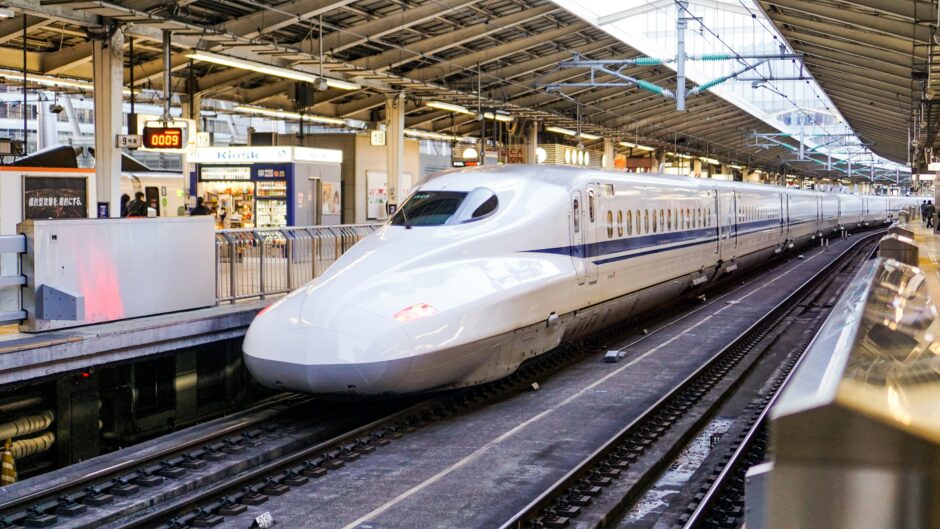India-Japan relations have for the most part had a solid relationship, growing even further in recent years. India has committed itself to the ‘Free and Open Indo-Pacific’ strategy, pioneered by Japan, and the two countries cooperate in a wide range of areas both through bilateral and multilateral means. During a summit between Prime Ministers Narendra Modi and Fumio Kishida in 2022, a 5-year 5-trillion JPY ($42 billion at the time) investment target in India. The summit and announcement came around the funeral of former Japanese Prime Minister Shinzo Abe and highlighted the strong growth of the bilateral relationship over the past decades as well as providing a glimpse into the future.
India and Japan have enjoyed strong ties since ancient times, perhaps as early as the 6th century when Buddhism was first introduced to Japan. Even after World War II, despite seeing both countries fight each other (India as part of the British Raj), relations quickly warmed again. One could even make the case that it is the immediate aftermath of the war that has built the foundations for the two countries’ strong and friendly bilateral ties. Japan became one of the first states to recognize Indian independence in 1947 and India donated elephants to Tokyo Zoo to cheer the spirits of a nation devastated by war. Indian Prime Minister Jawaharlal Nehru even refused to attend the 1951 San Francisco Peace Conference due to concerns about the treaty limiting Japanese sovereignty and subsequently the two countries signed a bilateral peace treaty in 1952 establishing formal diplomatic relations. Since then, the two countries have enjoyed remarkable and friendly relations, perhaps only surpassed by the United States-Japan relationship. While they face similar strategic and security concerns, such as the looming threat of China, and cooperate extensively on these issues through the ‘Free and Open Indo-Pacific’ concept, there are several economic (and cultural) developments of the India-Japan relationship that are interesting to look into.
Building on the solid foundation in the immediate aftermath of World War II, the post-war relationship evolved economically as well. Iron ore imported from India was crucial to Japan’s economic recovery and India became the first recipient of the Japanese government’s yen loan aid in 1958. Although restrained by the dynamics of the Cold War and a brief cooling in relations due to India’s nuclear weapons testing in 1998, the India-Japan relationship has been booming yet again. The commercial relationship continues to grow, and while total bilateral trade remains relatively low compared to other trading partners, trade has almost doubled in the past decade. While undoubtedly partially due to India’s tremendous economic development, and the mutual removal of several tariffs since 2008, it also highlights the growth and vast potential of the India-Japan relationship. The personal relationship between Narendra Modi and the now deceased Shinzo Abe can also be attributed to the deepening ties between the two countries. The India-Japan relationship was one of the cornerstones of Abe’s foreign policy during his terms, and he was successful in convincing a historically cautious India to join his vision for the Indo-Pacific. The advancements seen during this time include the establishment of the ‘Special Strategic and Global Partnership’, enhanced cooperation on security, as well as in the economic and development fields.
Security and strategic cooperation tends to be the main focus of recent media, but joint development projects and investment are also a key part of the relationship. Japanese Foreign Direct Investment (FDI) has more than doubled since 2014, standing at 641 billion JPY (roughly $4.25 billion) in 2022, and India recently became the top investment target for Japanese companies, highlighting the advancement of the mutually beneficial partnership in recent years. These reports come along with the projected surge in Japanese investment towards India in pursuit of the 5-year 5-trillion JPY investment target set during the Modi-Kishida summit in 2022. India has been the largest recipient of Japanese official development assistance (ODA) for decades, culminating in various key projects. The Japanese Ministry of Foreign Affairs highlights cooperation on the Delhi Metro as the most successful project utilizing Japanese ODA.

Railways, and specifically high-speed rail, has become a keystone of India-Japan cooperation. Work on the high-speed rail corridor between Mumbai and Ahmedabad, India’s first, is described as the flagship project of contemporary relations between the two. The project, which was announced in 2015 and began construction in 2020, will connect two of India’s most populous cities with a 508 kilometer track running at speeds of up to 320 km/h. Approximately 80% of the project’s estimated total cost of $15 billion will be funded by Japanese ODA through grants and loans administered by its Japan International Cooperation Agency (JICA). In return, Japanese Shinkansen (bullet train) technology will be used for the line, and the order of 24 trains is set to be completed by this year. Investments and flagship projects such as these not only demonstrate the cordial and robust nature of the bilateral partnership, but also an increasing play to shift economic power projection away from China. Much is reported on China’s growing economic influence and investments and its rivalry with the United States in the Indo-Pacific region, and Japan is often less discussed. But when it comes to investments, in India, and even the South-East Asian region as a whole, Japan is far ahead of China and an incredibly formidable partner. Japan’s FDI to India in 2022 amounted to $4.25 billion in 2022 and $198 billion to ASEAN countries over the past decade, compared to China’s $300 million and $106 billion respectively.
So, what does the future hold… Aside from advancing cooperation on security and strategic issues, the joint investment target of 5 trillion yen over the next five years will deepen the relations even further as India becomes the top investment destination for Japanese companies. Flagship projects like the Ahmedabad-Mumbai HSR corridor could pave the way for future developments, such as on the ‘Diamond Quadrilateral’ project which aims to connect Delhi, Mumbai, Kolkata and Chennai with high-speed rail. India is targeting an average of $100 billion in FDI inflows over the next five years as it aims to transform and continue to develop its rapidly growing economy. It has the potential to lure investors and companies seeking to diversify away from China, and Japan is a big part of that. With a long history not only from political and economic ties but also cultural and spiritual ones, the India-Japan relationship is a key partnership to focus on in the coming years.



